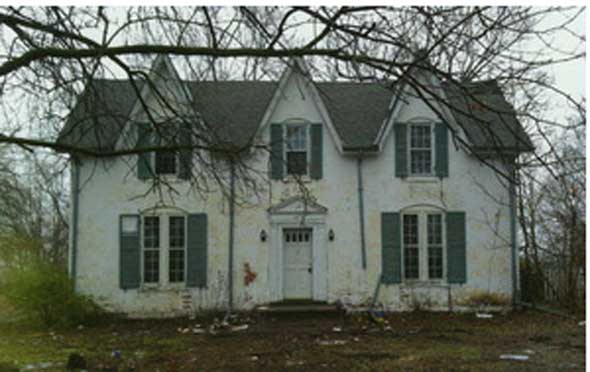(The Midtown KC Post is profiling the buildings on the Historic Kansas City Foundation’s Most Endangered List for 2013. More about our series of stories.)
Being listed as an important historical site does not guarantee a house’s protection.
That’s clear from the history of the Poage-Arnold house, or “Three Gables,” at 9550 NE Cookingham Drive in Kansas City.
The house was named one of Clay County’s 76 most significant historic sites in 1976. Preservationists plan to apply for designation as a National Historic Landmark.
But the house is also on another kind of list. It’s listed by both the Missouri Alliance for Historic Preservation and the Historic Kansas City Foundation as among their most endangered properties.
The house is just outside Liberty in Kansas City, and has been championed by the Clay County Historical Society.
“The building is a center hall Gothic Revival style house, and is a rare example of this architectural style both in this community and statewide,” the Missouri Alliance wrote in a press release this year.
Construction is believed to have started as early as 1824. The Historic Kansas City Foundation says in 1851 the property was sold to prominent Clay County settlers Thomas and Martha Arnold, who constructed the Gothic Revival portion of the house. The adjoining cemetery is the oldest in Kansas City.
As recently as this May, the Liberty Tribune was reporting the house was for sale for $108,650. Just last Sunday, the paper carried an article written by Jana Becker, president of the Clay County Historical Society, saying that although the house was purchased at auction by a real estate investor, it is still on the market. The historical society is trying to get out the word hoping that someone with an interest in its history will buy and preserve it.
“The house and outbuildings (a barn and a garage), represent the pattern of settlement in Clay County in the early 19th century. The evolution of the house and outbuildings reflects the change in style and technology of a farmstead. While much of the original farmstead is developed, the remaining 2.8 acres convey the significance of the settlement of Clay County. This property is one of the rare surviving examples of this within Kansas City. Along with its significance as an example of a farmstead, the house is a rare surviving example of the vernacular Gothic Revival style of architecture. Popular in the United States for a short period beginning in the 1850s, the Gothic Revival style declined in popularity after 1865,” she wrote.
Three Gables went through foreclosure and has not been maintained for a decade. One owner had planned to demolish the house and sell the land for development.
“Due to its location in a dangerous curve on Missouri 291 Highway, and to the surrounding residential development that has occurred in the last decade, it is unlikely that the property could now be sold for commercial development. It is hoped this nomination will help the new owners understand the importance of this structure and call for its preservation in future development plans,” the Missouri Alliance said.




Who’s talking